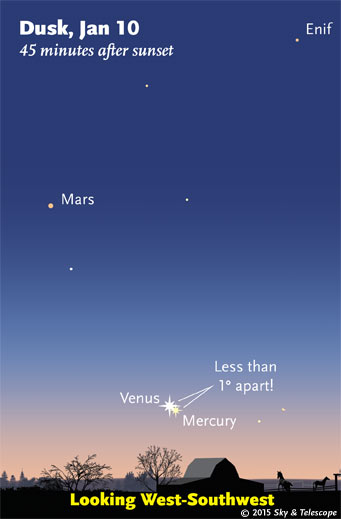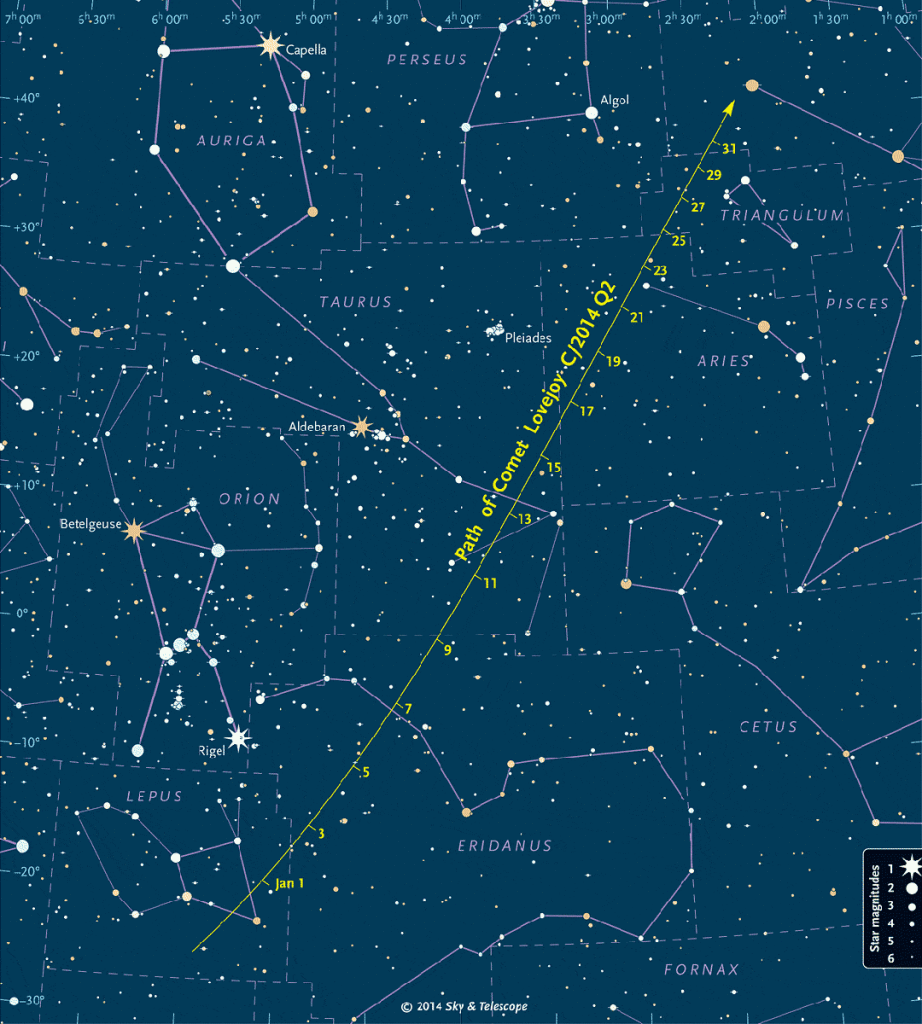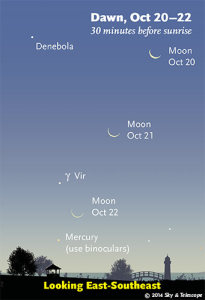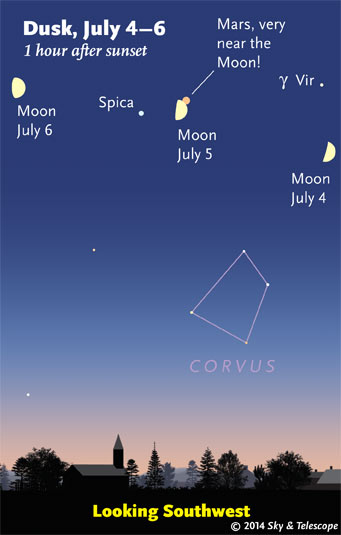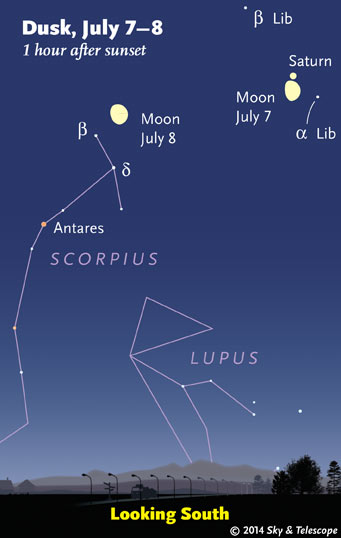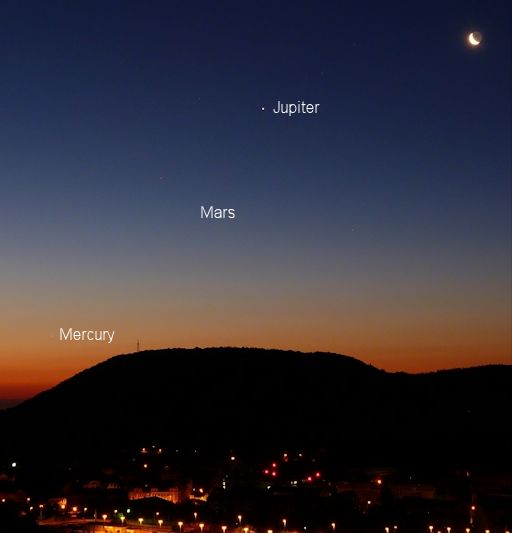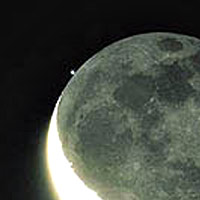Well, we missed this because of the “winter storm.” Anyway, they will still be very close for a few days.
From Sky and Telescope:
Saturday, January 10
Venus and Mercury are closest together this evening in twilight, 0.7° apart. Look low in the southwest about 45 minutes after sunset, as shown here. They’ll stay within 1° of each other through Monday.
– See more at: http://www.skyandtelescope.com/observing/weeks-sky-glance-january-9-17/?et_mid=714345&rid=247497481#sthash.wEynlxv7.dpuf
